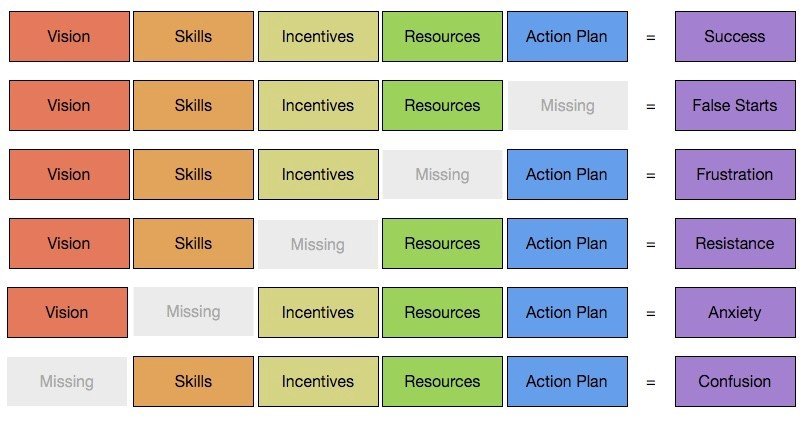How to Manage Change
Making a significant change in an organization whether it be IT or otherwise can be one of the most challenging events for an organization. With a technology change, you are implementing a technology that undoubtedly impacts the daily operations and processes of your employees. Many organizations just turn on technology and “throw it over the fence” and hope for the best. Very quickly its employees become confused, resistant, frustrated, anxious, or revert to the “old ways”. To implement a change successfully, you need to inject change management into your implementation.
What is change management?
Successful technology implementations allow for team members undergoing change to be prepared, equipped, and supported to successfully adopt the changes. Change management is the people side of an implementation where the change is communicated in several aspects that equips team members with effectively the why, what, when, and how of a project.
“It is not the strongest or the most intelligent who will survive but those who can best manage change. ”
Why does change management matter, I never used to have to do this?
Many organizations still think, “we send out an email the day before we turn it on, isn’t that good enough?”. Simply, that answer doesn’t work anymore because of Shadow IT and how many business processes hinge on technology.
Shadow IT is the idea of technology that is invasive in your organization's business processes, but it is not an official service or sponsored by IT. There was a time that employers controlled the technology that employees use by controlling procurement and limiting what can be used on a device. Technology is so accessible and affordable today that an employee can purchase a technology that runs your business as a free trial or for less than the cost of a coffee run. Often flying below the radar of procurement or in the range of what an employee may self-pay out of frustration of the company offerings.
Secondly, if a large technology does not get adopted and utilized on schedule, business processes will slow or stop altogether. How long can your business processes last with employees not knowing how to log into email, process new employees, ship products, or invoice customers? Change management empowers employees to be excited, knowledgeable, and ready to take on the change, but how do we manage change?
How do we manage change?
There are two main methodologies for addressing a change: ADKAR and VIRSA models. We will be covering the VIRSA model in this article, but both models have varying acronyms and processes to follow, but effectively encourage the same ideology. The official name of the VIRSA model is “The Lippitt-Knoster Model for Managing Complex Change”, and for obvious reasons, we will be using VIRSA to refer to the model. VIRSA stands for Vision, Incentives, Resources, Skills, and Action Plan.
VIRSA Model:
Vision- This is the why statement and outlines a clearly imagined view of the end state of change. Without a clear vision or why statement, the organization will be confused about why the project is even taking place.
Skills- Training and development are crucial throughout the implementation and deliver employees that have the skills that will be required to accomplish their work in the new environment. If your employees don’t have the skills to migrate to the other side of the change, they will be anxious about the change.
Incentives- If your vision would have a subtitle it would be the incentives phase that answers your employees’ most important question “What’s in it for me?”. Many of your employees are ok with the status quo and don’t want change. The incentives phase sells them on the change, and how they are better off on the other side of the change.
Resources- Resources consist of the capacity and ability to make the change happen as in, “does the project have everything and everyone needed to make the change happen?” While this is often time, money, and people, it can also be clearly identifiable sponsorship from leadership. Frustration is the byproduct of not having the appropriate resources. This can be frustration from the team or the rest of the employees because they are not appropriately supported throughout the change.
Action Plan- The final step is to establish an easy to communicate Action Plan, but not just for the project team. Everyone should know how the vision translated into specific, achievable goals and objectives. The implementation will have false starts or worse without a good action plan. There are many moving pieces and “gotchas” that come with technology implementations, and missing one could spell disaster.
Navigating the IT landscape can be challenging. Reach out to Atleda to find a partner that will help you integrate technology into your business process to grow and optimize your business.

